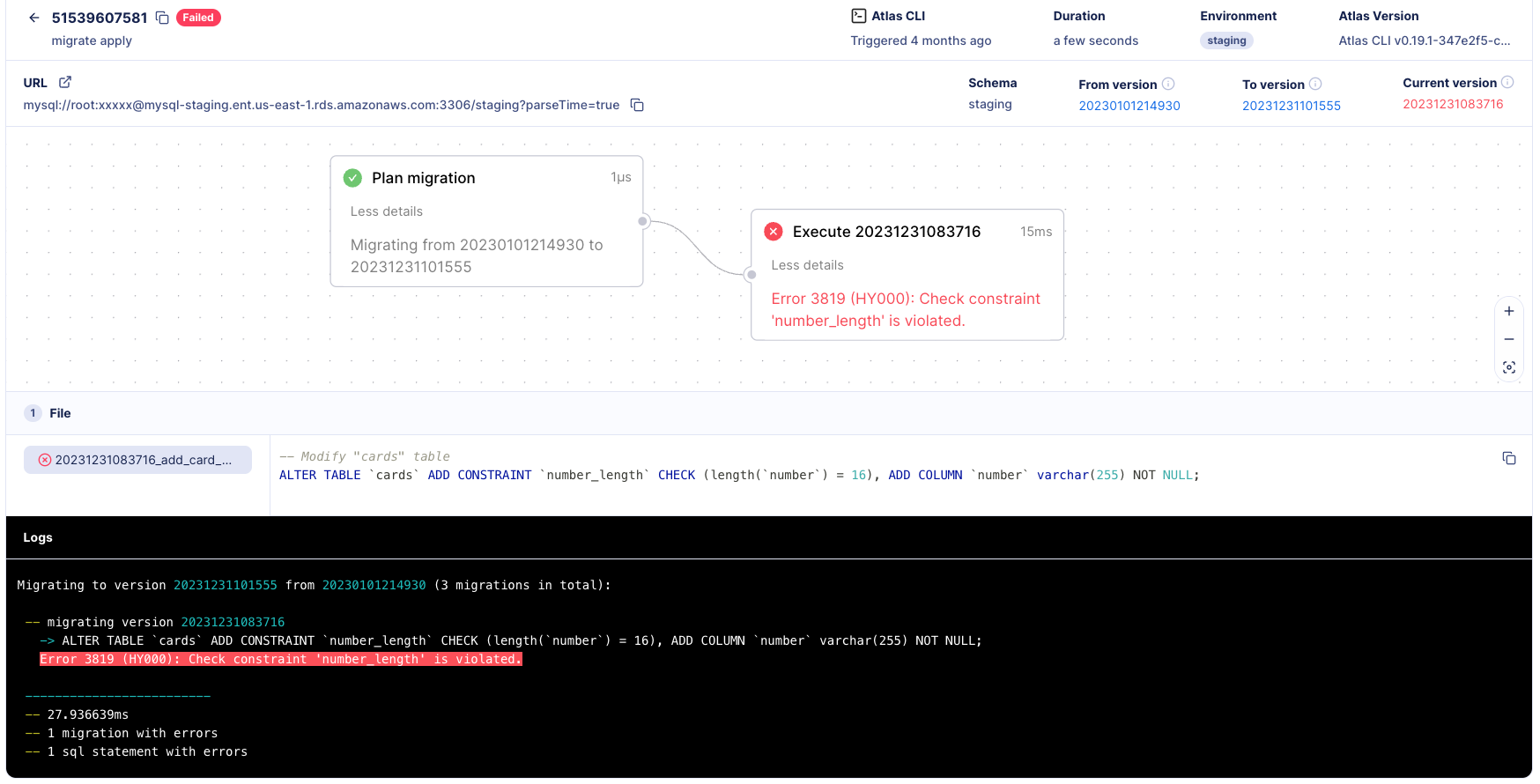Troubleshooting Migrations
Troubleshooting and triaging failures during database migrations can be especially difficult. Errors often stem from data and schema changes, making it hard to identify the exact problem.
When an error or migration failure occurs, it is crucial to understand what went wrong and assess the current state of the database.
Drill Down Analysis
When reporting migration runs to Atlas Cloud, the detailed logs allow you to quickly drill down and troubleshoot any schema migration failures.
The report shows what happened in the migration, what caused the failure, and the current state of the database post-deployment.
For example, in the image below we can see a migration that failed due to a constraint, number_length, which
was violated. This caused the migration to fail and only one of the three intended migration files was executed on
the database.
Database-per-Tenant Migrations
In a database-per-tenant architecture, the same migration is executed on multiple databases. If a migration fails, the root cause of the error often involves tenant-specific data and schema changes, making it even more challenging to pinpoint issues.
In this scenario, identifying which databases were affected and which remained unaffected is crucial to assess the impact and plan the next steps effectively.
In the image below we can see the deployment intended to run on four different databases. The migration failed once it reached the third tenant, stopping the deployment entirely before reaching the last tenant's database.
When examining the specific tenant that failed (as shown in the image below), we can see that the failure was caused by an attempt to create a table that already existed in the database.
The detailed deployment reports provide clarity on migration failures, allowing for efficient resolution and minimizing downtime.


